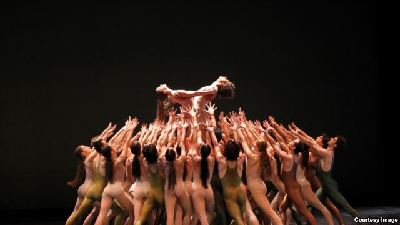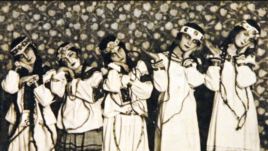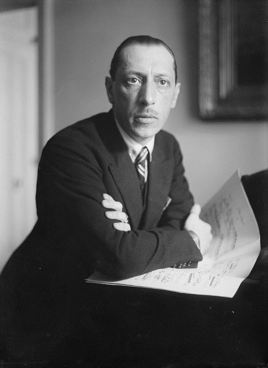Preparations are under way to mark the 100th anniversary of Igor Stravinsky's momentous ballet score, "The Rite of Spring".
The revolutionary work, which provoked a riot during its Paris premiere, is often credited with ushering in the era of modern Western music and continues to exert influence today.

The opening notes of "The Rite of Spring" are iconic and beloved today. But for many audience members who came to the Ballet Russes in 1913, they were unwelcome.
A bassoon had likely never been performed in such a high register. Stravinsky intended to evoke peasant voices in pagan Russia.
But as the bassoon segued into the Spring Divinations sequence, the audience began to riot.
"It was a high society type of audience who showed up expecting more of what they might have experienced in the past with Tchaikovsky and with Chopin ballet and even with earlier Stravinsky," says L. Michael Griffel, chair of the music history department at the Juilliard School.
"And instead they had dance and music that was unlike anything they had experienced, and to their ears it very likely seemed ugly. You did not have too much of a tune anywhere you would put words to or could hum. And this audience, dressed in fancy evening gowns and tails and tuxedos and whatnot, they were just devastated."

Griffel says the musical elements in "The Rite of Spring" conform to a storyline, itself shocking, about pagan tribes and their rituals of earth worship.
"You have 'The Games of the Rival Clans', which is wonderful music rhythmically," he says.
"You have also the mystical moments that move slowly, something like 'The Mystical Circles of the Young Girls.' You have 'The Adoration of the Earth,' where the elder, the leader of the group, kisses the earth."
This pungent and challenging world was magnified by the set and colorful costumes, which one critic said resembled tents because they obscured the dancers' bodies.
Emil Kang, artistic director of Carolina Performing Arts and its year-long celebration of "The Rite of Spring," says the original choreography, by Vatslav Njinsky, was "anti-ballet."
"Here was a choreographer who made a ballet of 'pigeon toes' as they called it and bent arms," Kang says. "Again, the antithesis of what was known to be esthetically pleasing at the time. All those things were contributors to the displeasure of the audience that night."
Griffel says the themes were dark, even frightening. In the climax, a young girl dances herself to death to appease the fertility gods.

"This is the sacrifice by the group of the individual. That is the 'Rite of Spring'," he says. "That is one of the rites of spring. Life itself, and art imitating life, is not pretty all the time and not controlled all the time. It isn't all balanced; it isn't all symmetrical; it isn't all euphonious."
Emil Kang says "The Rite of Spring" helped introduce an approach to art where every person finds his own meaning in a work.
In that spirit, Carolina Arts commissioned 11 new pieces based on "The Rite of Spring."
"The commissions are varied across different genres from artists around the world," Kang says, "to all of whom we just said 'Look at this piece in your own way. Take the chance to reinvent it.'"
Basil Twist, a puppeteer, will create a ballet without dancers, making curtains and other inanimate objects move to a fully-orchestrated version of "The Rite of Spring."
Other works in progress include two musical scores written for the avant-garde string quartet Brooklyn Rider as well as a three-part cycle called "The Seasons," played by Yo-Yo Ma and the Silk Road Ensemble.
Theater director Anne Bogart and choreographer Bill T. Jones are collaborating on a piece. And there are surprises yet to be unveiled.
All are inspired by one of the most famous - some would say infamous - works in the history of music.
choreography: 编舞
euphonious: pleasing or agreeable to the ear 悦耳的
puppeteer: one who entertains with and operates puppets or marionettes 操纵木偶的人
avant-garde: 前卫的
George Abbott, 1887-1995: 'Mr. Broadway'
Why "The Nutcracker" is a Christmastime favorite
Gene Kelly, 1912-1996: his movies made dance popular in America
(来源:VOA 编辑:旭燕)
关注和订阅


电话:8610-84883645
传真:8610-84883500
Email: languagetips@chinadaily.com.cn